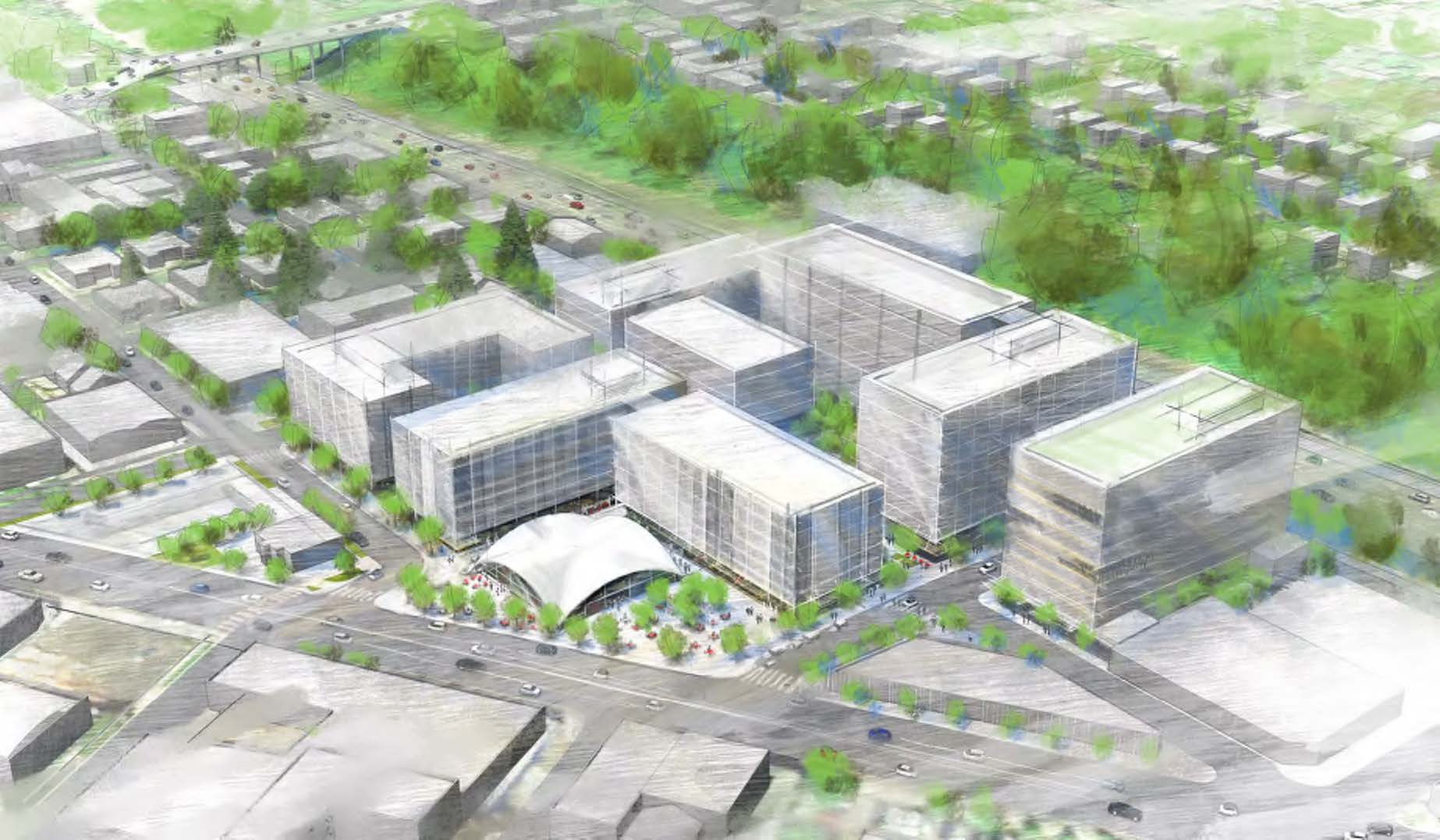
The Pepsi Blocks development will include the retention of the existing mid-century building facing NE Sandy, and the addition of up to 1,000 units. The project is being designed by Mithun Architects for developer Security Properties.
The masterplan for the Pepsi Blocks on NE Sandy went in front the Design Commission for the first time last week. The Daily Journal of Commerce reported that the project was met with a generally positive reception.*
The Oregonian looked at the Brio Lofts at 177 N Failing St and the Zeal Lofts at 3139 N Williams Ave, two micro-apartment developments by the same developer Vibrant Cities, which will also include micro-restaurant space.
The Portland Mercury reported on the Housing Bureau’s plans to buy a site at 5827 NE Prescott St, which will be developed with up to 75 affordable apartment units.
As the Lotus Lotus Cardroom and Cafe gets demolished to make way for the SW 3rd & Salmon tower, the Portland Business Journal took a look at its past — and its future.
Portland Architecture visited the recently completed Jupiter NEXT hotel, with its “matte-black facade that makes use of a familiar material in an unfamiliar way.”
With the recent approval of the Moxy Hotel and plans for Block 216 at SW 9th & Alder announced, the Portland Mercury asked whether rampant development is signaling the death of the food cart pod?
*This article will be unlocked for the rest of this week. After this week it will only be viewable by DJC subscribers.
Portland, the city that will put you to sleep with bland architecture and alot of it. An endless sea of 6 story brick clad buildings.
It’s better than seeing an array of abstract facade designs and contextless glass high rises that merely reflect the egos of big businesses and their investors without regard to any community or nation. Brick has always been an essential material in Portland’s, (and America’s), building history. That and cast iron, but we can see how the city responded to all of those beautiful buildings back in our regretful modernization period.
Complaining about brick in Portland is comparable to complaining about shingle siding on residences in the PNW coast.
An endless sea of 6 story brick clad buildings.
https://www.discoverwalks.com/blog/wp-content/uploads/2016/07/grands-boulevards-big.jpg
And surprisingly, with those broad streets, the walkability of that city is extremely favorable. Portland needs to learn from these old architects and city planners. Invest in smaller projects that listen to the community rather than pulling in more large corporations that are making Portland like any other historically rootless American city. Keeping the past and building for the future are one of the same things.
“Resiliency of Result over Efficiency of Execution”
Tim’s point was that you complained about same-y buildings, yet every beautiful European tourist city is composed of 95% identical buildings. You then deflected away from that to the street width thing which ironically destroys your point even further, because it confirms that the urban planning itself is the attraction rather than how unique each individual building facade is. Thus your point about plain looking buildings has been refuted, and as you are a rational human being, we should hear nothing more along those lines from you.
Thanks
Oops, I replied to the wrong person. Apologies! 🙂
A lot of confusion on this post haha.. oh well
And the walkability is still fantastic, even with that broad street intersecting through it. We need to look to those old urban planners and architects for the true beautiful city. Portland needs to invest in smaller scale, local businesses rather than pulling foreign, international corporations that lack any cultural context. Resiliency of result over efficiency of execution. And likewise, urban planning is successful when building for the future & keeping the past are one of the same thing.
Huh, I rewrote this whole thing since it glitched and didn’t seem like it was posted. Sorry for the rehash.